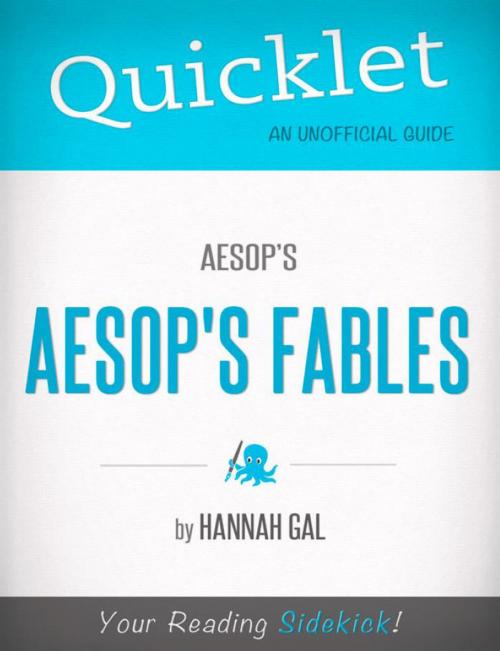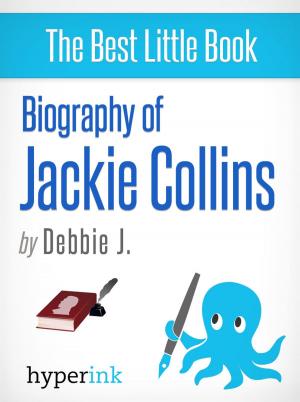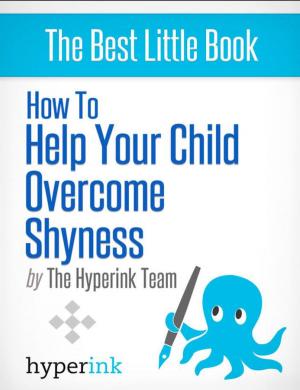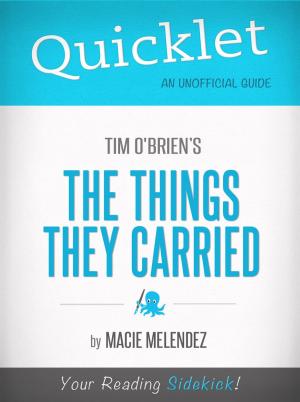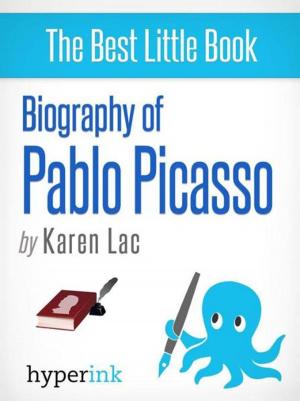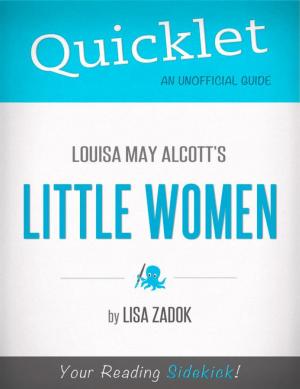Quicklet on Aesop's Fables
Nonfiction, Reference & Language, Study Aids, Book Notes, Art & Architecture, General Art| Author: | Hannah Gal | ISBN: | 9781484006580 |
| Publisher: | Hyperink | Publication: | February 12, 2012 |
| Imprint: | Hyperink | Language: | English |
| Author: | Hannah Gal |
| ISBN: | 9781484006580 |
| Publisher: | Hyperink |
| Publication: | February 12, 2012 |
| Imprint: | Hyperink |
| Language: | English |
ABOUT THE BOOK
I was fascinated by Aesop’s fables as a child. The colorful animal characters and gripping plots captivated my imagination. I was intensely curious to find out how the conflict at hand would be resolved and what magical animal character would be introduced next.
Still enthralled by this appealing genre, I now find myself amazed at how loudly the enchanting tales’ morals resonate in real life. Indeed, it is a struggle to find any Aesop moral that does not manifest itself in everyday life.
I am taken by the fables’ unique ability to transcend geographic and cultural divides. This truly powerful meme has seen translations to countless languages worldwide as well as film adaptations, commercials and theater. The fables are an integral part of mainstream education worldwide and have even inspired a long list of widely used phrases and expressions. The impact of Aesop’s Fables on modern culture is immense. Rarely does a work of art bear such overwhelming relevance to human existence. This relevance may indeed be the secret to the fables’ long lasting appeal and unfading success.
These fables don’t just entertain but deliver sound, prudent advice. Through the simplest of narratives they provide useful life-improving lessons such as, ‘Beware of False Flattery,’ ‘Prepare for a Rainy Day,’ ‘Beware the Wolf in Sheep’s Clothing,’ and ‘Appreciate That Truth is in the Eye of the Beholder.’
As a writer I am in awe of Aesop’s storytelling skill and impeccable delivery. With cleverly crafted dialogue and immaculately thought-out hidden messages, Aesop leads readers to the one inevitable conclusion that is the moral of the story. His ability to guise human emotions in animal characters is uncanny, and his insight into human psyche simply priceless.
MEET THE AUTHOR
Hannah Gal is an award winning artist, filmmaker and writer. She studies fine arts and photography and exhibited work and films in in galleries and film festivals worldwide. Gal has been nominated to the prestigious Beck's Futures award and made the multi award winning Adobe commissioned film Breathe. This was followed by a documentary about the life of Leon Greenman (An Englishman in Auschwitz) and Savage based on the worst recorded case of child abuse in the US.
Hannah's credits include The Independent, BBC1, Huffington Post, three book titles, MacWorld, PDN, MTV, Sky and many more.
EXCERPT FROM THE BOOK
All fables teach a lesson but each fable’s moral is different. Through The Wolf in Sheep’s Clothing we learn that appearances are often deceiving, while The Fox and the Lion concludes that familiarity breeds contempt. It is safe to say that the overriding consistent theme throughout all the fables is the advocacy of a decent, honest, wise and, in a sense, riotous behavior. Among other qualities, the morals promote prudence, patience, avoidance of futile arguments, consideration of others’ viewpoints, favoring action over cheap talk, planning ahead, unity, and caution.
Some fables, such as Jupiter and the Monkey, maintain the positive theme but, rather than giving advice, simply offer observations on human behavior. Through this particular fable we learn that beauty is in the eye of the beholder, whereas The Goose Who Laid the Golden Eggs comments on how destructive human greed can be.
The characters in Aesop’s fables are animals and objects that assume human qualities. These characters change from one short fable to another but carry the same motifs throughout the entire collection; the fox is always cunning, the tortoise remains timid and slow and the wolf is cruel in all the fables in which he appears. Aesop’s animal and object characters speak to each other and display human emotions, such as paternal love, jealousy, greed, and respect, among a multitude of others.
At the heart of the fables there is always a dilemma or conflict which the characters work to resolve. This is a recurring theme in all of Aesop’s fables, where the curiosity-inducing conflict/dilemma is introduced very early on in the story and animals help bring it to a conclusion. The story of The Lion and the Mouse, for example, presents a situation in which the fierce lion is angry after being awakened by a mouse. The conflict here is in the mouse’s successful pleading for his life, with the suggestion that he might be able to return the favor some day, which the lion finds laughable. The improbable idea of a tiny mouse being of use to the king of the jungle is soon met when the mouse nibbles through a hunter’s net to free the trapped, exhausted lion.
Buy a copy to keep reading!
ABOUT THE BOOK
I was fascinated by Aesop’s fables as a child. The colorful animal characters and gripping plots captivated my imagination. I was intensely curious to find out how the conflict at hand would be resolved and what magical animal character would be introduced next.
Still enthralled by this appealing genre, I now find myself amazed at how loudly the enchanting tales’ morals resonate in real life. Indeed, it is a struggle to find any Aesop moral that does not manifest itself in everyday life.
I am taken by the fables’ unique ability to transcend geographic and cultural divides. This truly powerful meme has seen translations to countless languages worldwide as well as film adaptations, commercials and theater. The fables are an integral part of mainstream education worldwide and have even inspired a long list of widely used phrases and expressions. The impact of Aesop’s Fables on modern culture is immense. Rarely does a work of art bear such overwhelming relevance to human existence. This relevance may indeed be the secret to the fables’ long lasting appeal and unfading success.
These fables don’t just entertain but deliver sound, prudent advice. Through the simplest of narratives they provide useful life-improving lessons such as, ‘Beware of False Flattery,’ ‘Prepare for a Rainy Day,’ ‘Beware the Wolf in Sheep’s Clothing,’ and ‘Appreciate That Truth is in the Eye of the Beholder.’
As a writer I am in awe of Aesop’s storytelling skill and impeccable delivery. With cleverly crafted dialogue and immaculately thought-out hidden messages, Aesop leads readers to the one inevitable conclusion that is the moral of the story. His ability to guise human emotions in animal characters is uncanny, and his insight into human psyche simply priceless.
MEET THE AUTHOR
Hannah Gal is an award winning artist, filmmaker and writer. She studies fine arts and photography and exhibited work and films in in galleries and film festivals worldwide. Gal has been nominated to the prestigious Beck's Futures award and made the multi award winning Adobe commissioned film Breathe. This was followed by a documentary about the life of Leon Greenman (An Englishman in Auschwitz) and Savage based on the worst recorded case of child abuse in the US.
Hannah's credits include The Independent, BBC1, Huffington Post, three book titles, MacWorld, PDN, MTV, Sky and many more.
EXCERPT FROM THE BOOK
All fables teach a lesson but each fable’s moral is different. Through The Wolf in Sheep’s Clothing we learn that appearances are often deceiving, while The Fox and the Lion concludes that familiarity breeds contempt. It is safe to say that the overriding consistent theme throughout all the fables is the advocacy of a decent, honest, wise and, in a sense, riotous behavior. Among other qualities, the morals promote prudence, patience, avoidance of futile arguments, consideration of others’ viewpoints, favoring action over cheap talk, planning ahead, unity, and caution.
Some fables, such as Jupiter and the Monkey, maintain the positive theme but, rather than giving advice, simply offer observations on human behavior. Through this particular fable we learn that beauty is in the eye of the beholder, whereas The Goose Who Laid the Golden Eggs comments on how destructive human greed can be.
The characters in Aesop’s fables are animals and objects that assume human qualities. These characters change from one short fable to another but carry the same motifs throughout the entire collection; the fox is always cunning, the tortoise remains timid and slow and the wolf is cruel in all the fables in which he appears. Aesop’s animal and object characters speak to each other and display human emotions, such as paternal love, jealousy, greed, and respect, among a multitude of others.
At the heart of the fables there is always a dilemma or conflict which the characters work to resolve. This is a recurring theme in all of Aesop’s fables, where the curiosity-inducing conflict/dilemma is introduced very early on in the story and animals help bring it to a conclusion. The story of The Lion and the Mouse, for example, presents a situation in which the fierce lion is angry after being awakened by a mouse. The conflict here is in the mouse’s successful pleading for his life, with the suggestion that he might be able to return the favor some day, which the lion finds laughable. The improbable idea of a tiny mouse being of use to the king of the jungle is soon met when the mouse nibbles through a hunter’s net to free the trapped, exhausted lion.
Buy a copy to keep reading!
